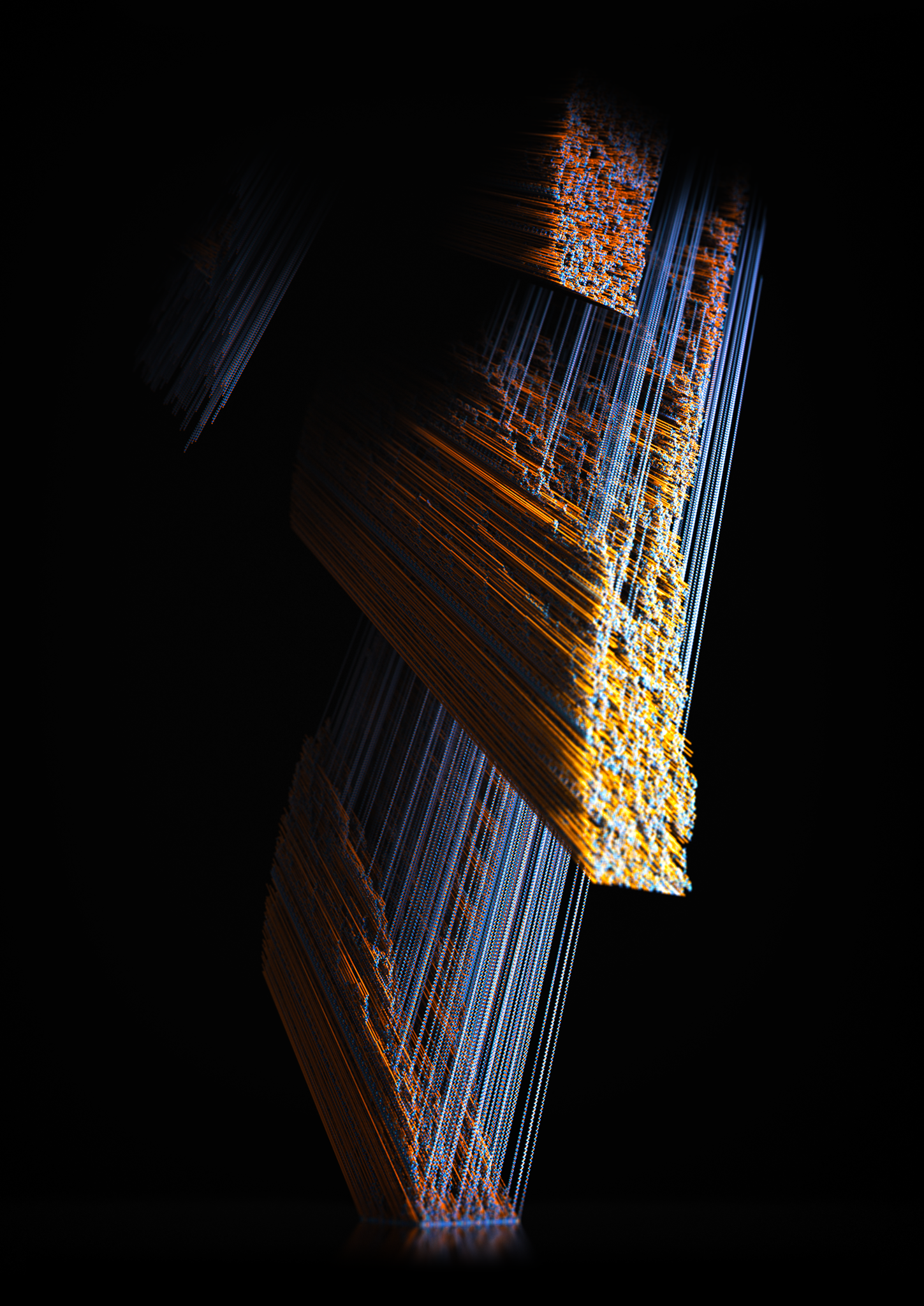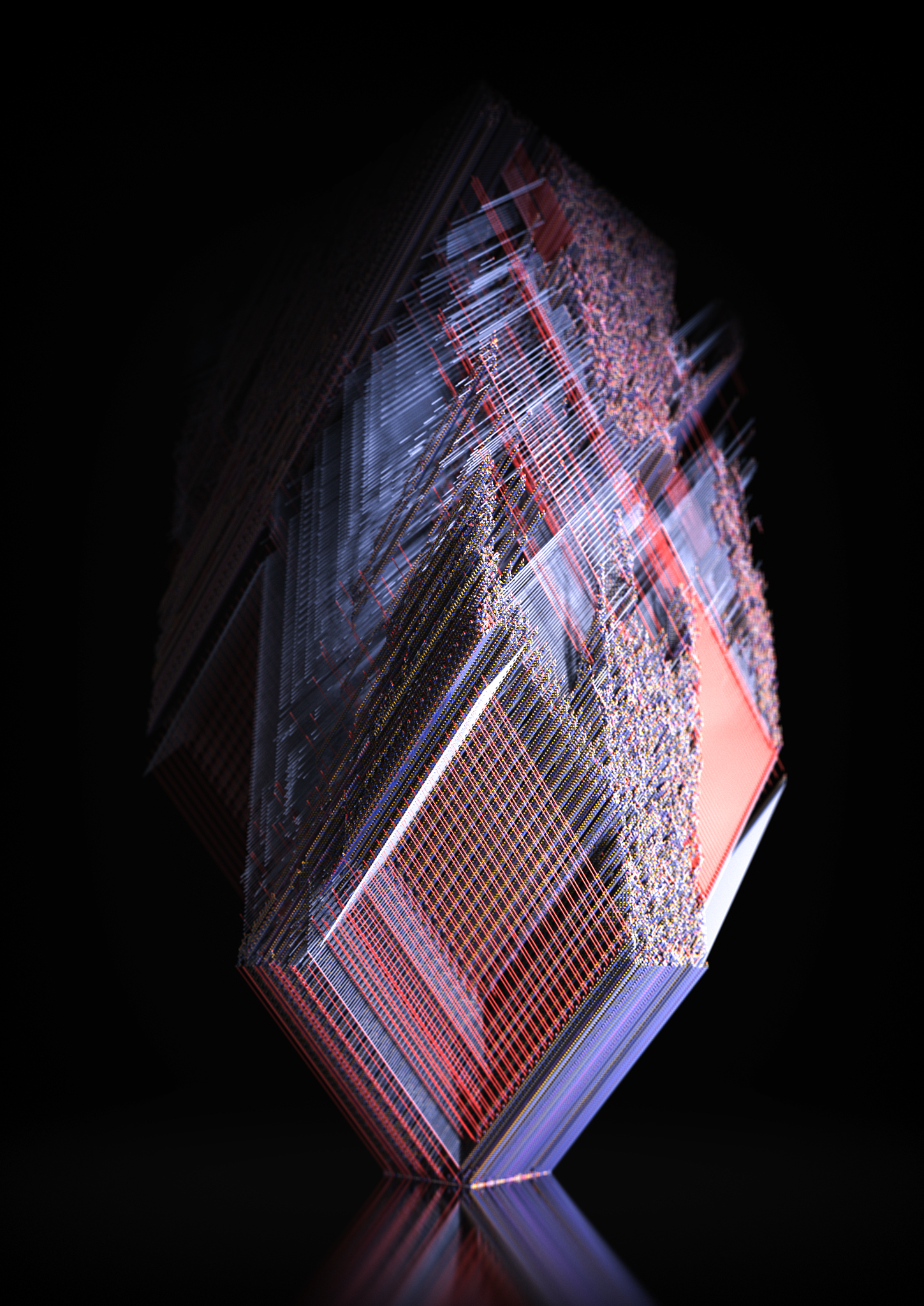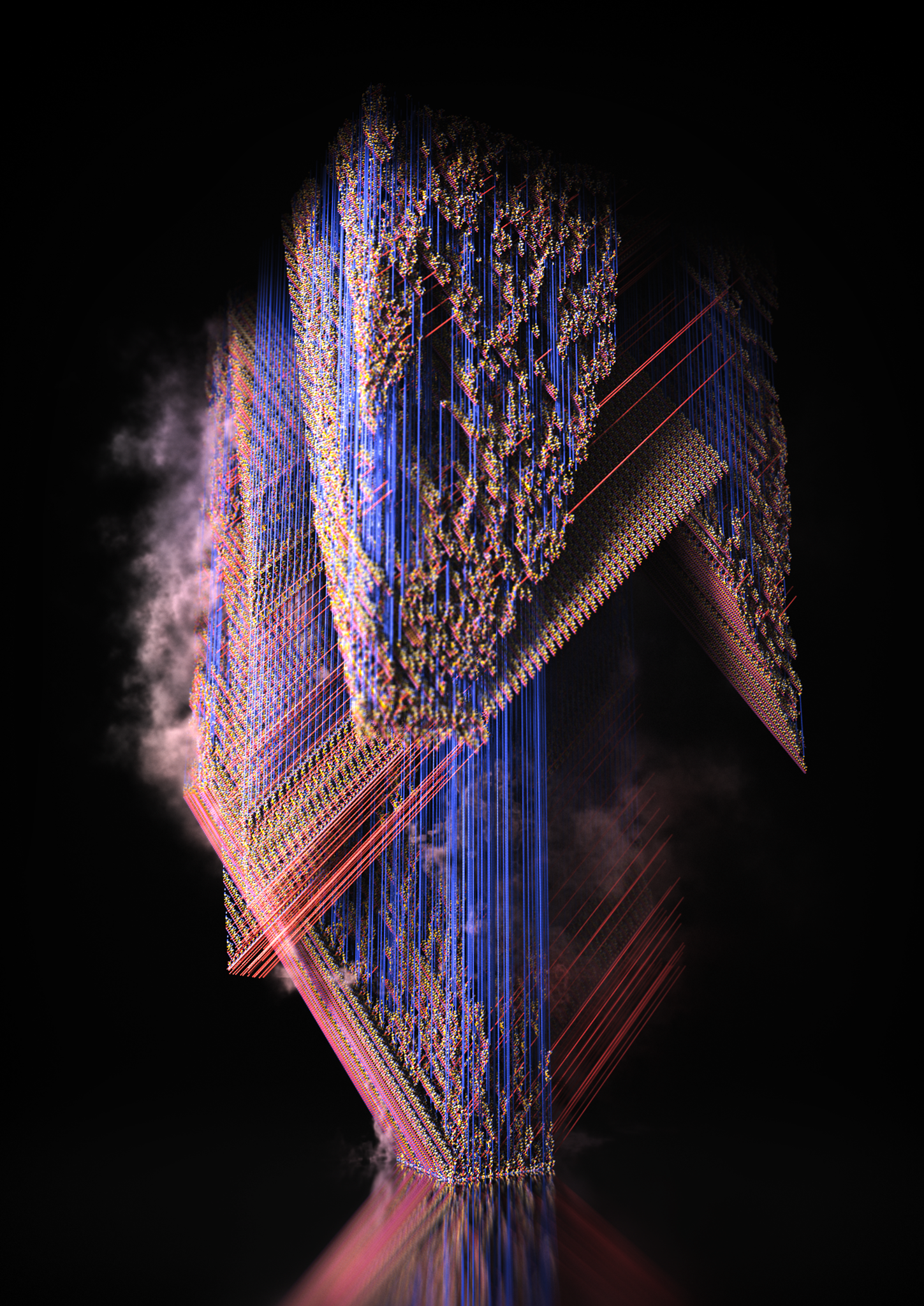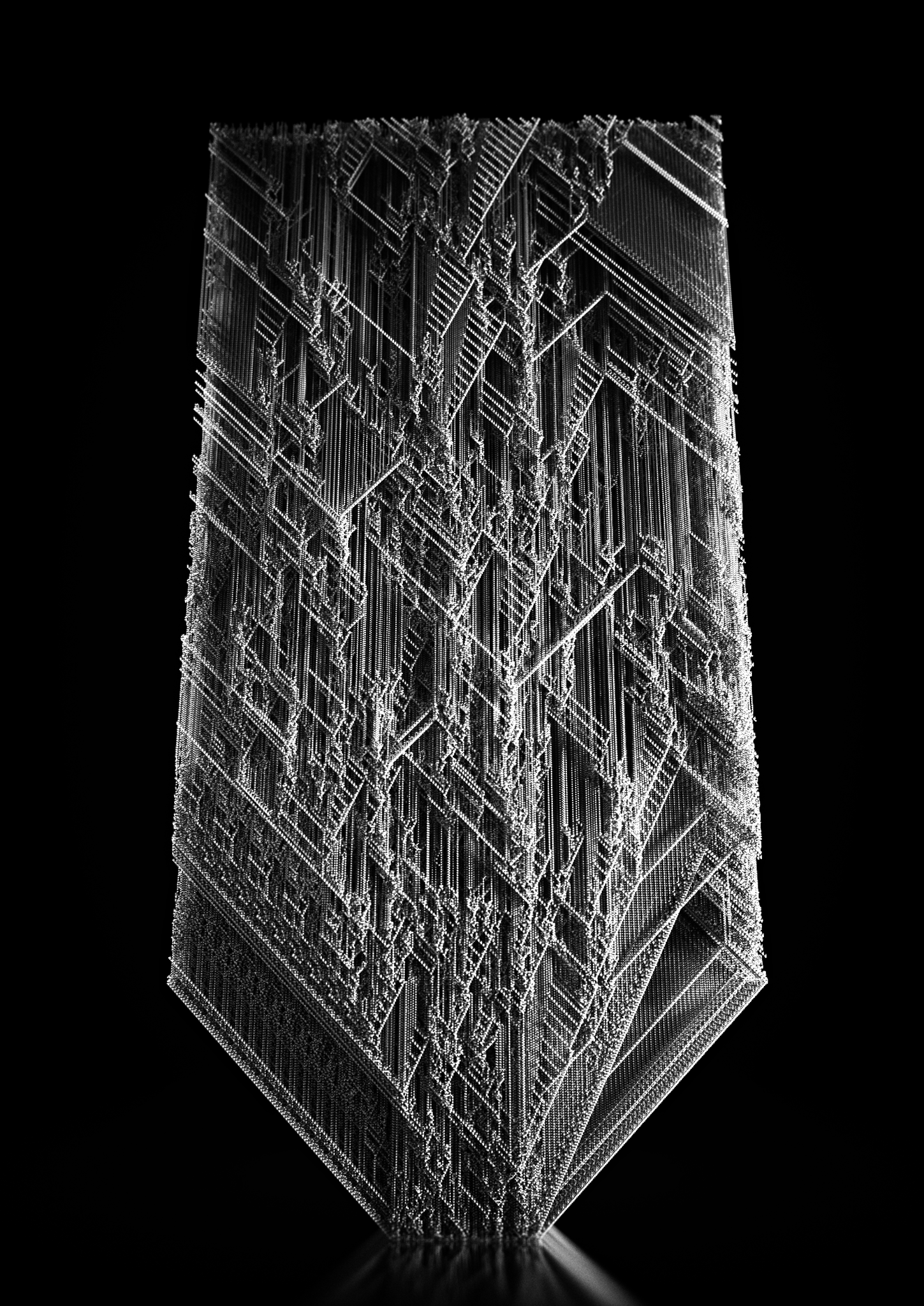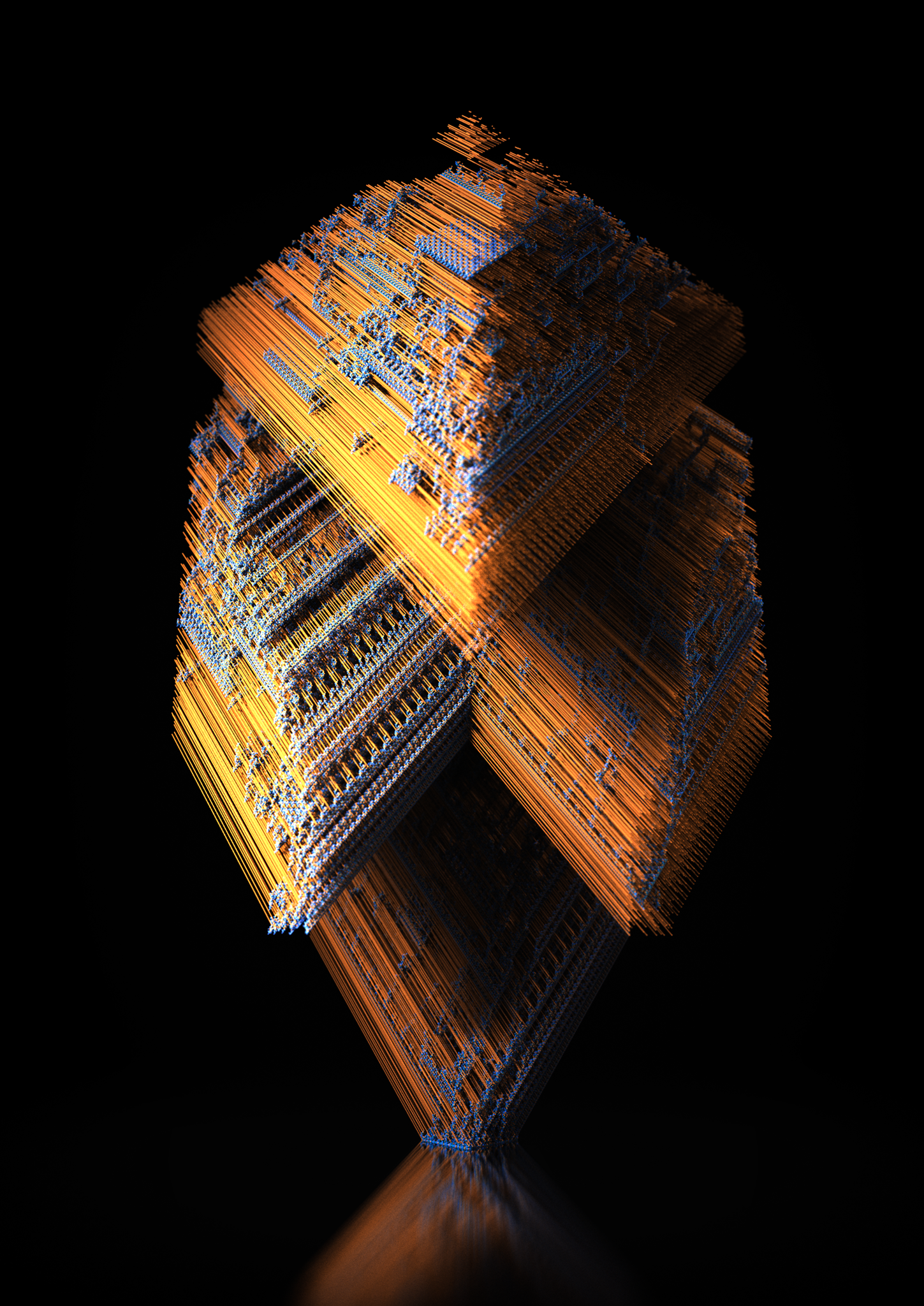Chrysalis
In 2019 I came across Christopher Langton's pioneering artificial life work via Greg Turk.
After implementing a few of the ideas from Langton's "Computation at the Edge of Chaos" paper, I became curious how it would look in three dimensions.
I did an initial implementation and found that, while most of the results were visually dull, there were many that were fascinating.
Later, in 2022, I revisited the project with Monotau.
Together, we implemented a version in WebGL.
With the WebGL version, we didn't want to curate specific parameters. We wanted every "random" result to be as good as possible.
So we went quite deep into aesthetic analysis to try to make this possible.
Each time you load the page, the algorithm reviews hundreds of options before finding one that it likes.
What I found most fascinating about this project is that there is a way in which these shapes have always existed. The rules for cellular automata are so simple that it feels much more like we are discovering ancient archaeology than designing something new.
Additionally, it was very cool that there would be universes of shape types where 99% were dull, but then a very rare 1% would be interesting. We didn't want to exclude these shapes, so we had to more and more refine our analysis algorithm.
Collaboration with Monotau.
Inspired by Computation at the Edge of Chaos by Christopher Langton.
Javascript, GLSL, WebGL
